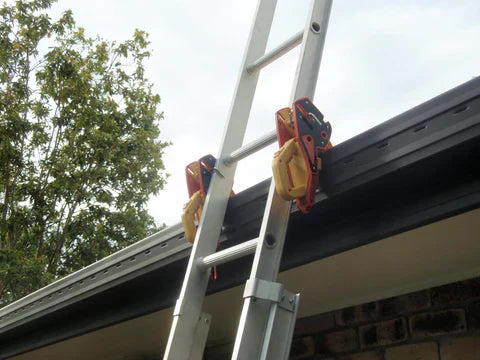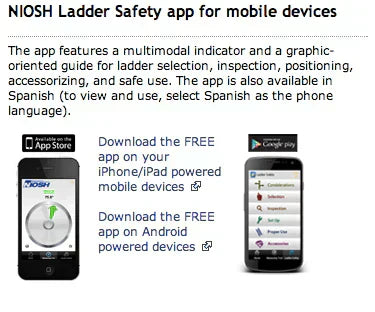Australian Workplace Ladder Safety Regulations

A Reminder about Australian Workplace Ladder Safety Regulation
The Work Health and Safety Act 2012 requires employers to protect their workers from any form of harm to their health, safety and welfare whilst working for them. As part of these safety regulations, ladders which are considered to be high-risk, should only be used when there are no other alternative means to access high items. Numerous accidents and falls are reported while working with ladders in the workplace, and this is generally because proper safety precautions are not followed. Below are some important points regarding ladder safety regulations that need to be followed in Australia.
- The ladder must carry the following markings: manufacturer’s name, rating (industrial or domestic), load rating and the maximum length. Ladders need to be used according to its rating. For example, ladders intended for industrial use need to have a load rating of 120 kgs or higher while domestic ladders should not be used in an industrial setting EVER.
- Ladders should be stored in a secured area free of mechanical damage and without exposure to external weather. Inspection of ladders that are not in use have to be performed at regular intervals and after each period of use to ensure they are still safe. Ladders found defective need to be replaced with components from the same manufacturer or replaced entirely.
- Take care to consider the type of environment in which the ladder needs to be used. Do not use ladders near power lines or outdoors during strong winds. Extension or single ladders need to be used as a means of access and egress only, while step or trestle ladders should be used in the fully open position only.
- While ascending or descending ladders, users must maintain at least three points of contact such as two feet and one hand. Face the ladder while working, climbing or descending. Carry tools in a pouch or tool-belt and avoid carrying them in hands. The ladder should be able to provide at least one metre of support beyond the task height. Never try to overreach with the ladder.
- Ladders are not to be used without additional, appropriate precautionary measures in place. For example, if a ladder is placed in front of a doorway, the door must be locked and a warning sign placed in front. The ladder has to be secured from unintended displacement with a person holding it at the foot or proper grips used to secure it in place.
- Slip resistant shoes must be worn and the ladder base, rungs or steps should be fitted with rubber to avoid slipping, and ladders must not be joined together to increase height.
Administrative measures may be implemented to support other control measures. A “no go” area is an effective method of warning people at work as well as preventing accidents and damages. Only competent and authorised personnel should be allowed to work in high risk areas. Plan and sequence work so that no two jobs are taking place at the same time or one above the other. In this manner, safety can be ensured, confusion avoided and interference eliminated from people not related to the task.
Since working from heights involves many risks, there should be established emergency procedures and facilities like first-aid, medical assistance, evacuation procedures, etc. readily available. Details of key elements of the emergency plans should be displayed at the workplace and must be easily accessible to workers.
Ensure that the safety procedures are given a mock test to analyse effectiveness. In the long run, it will prove highly beneficial if employees are provided the necessary instructions and training in emergency procedures on a regular basis.


